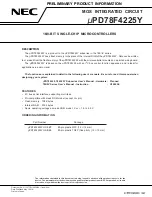
- 3 -
Introduction
The DX Engineering
NCC-1
Receive Antenna Variable Phasing Controller is a two-channel receive
antenna phasing system. This sophisticated controller allows the user to combine and
independently adjust the phase and level of two antenna inputs, essentially creating a fully
adjustable phased array out of two similar receive antennas.
It can be used with existing or new
receiving antenna systems to improve or
enhance desired signals by adding
desired signals. It can also eliminate or
greatly reduce unwanted signals or noise
by phase nulling the unwanted signal
regardless of the signal or noise type.
The
NCC-1
is fully compatible with the
DX Engineering Active Receive
Antennas. Using 102" whips as antenna
elements, these antennas can provide
excellent receiving performance from
100 kHz to 30 MHz. Two
ARAV3-1P
active receive vertical antennas can be phased to form a
vertically polarized array. The minimum useable spacing varies with local noise floor, but is
typically 1/10-wavelength. Maximum spacing for true unidirectional patterns is just over 1/4-
wavelength, although wider spacing is still very useable. Two
ARAH2-1P
active receive horizontal
antennas can be configured as horizontally polarized dipoles to form a two element horizontally
polarized receiving array.
The
NCC-1
front panel controls provide repeatable directional pattern adjustments. Properly spaced
Active Receive antennas are useable over a wide range of frequencies, offering the best possible
phase nulling and peaking.
The NCC-1 can be used with many other combinations of receiving antennas including Single
and Reversible Beverages, Receive Four-Square Arrays, K9AY Loops, and more.
It will
increase the directivity of any properly spaced combination of two similar antennas.
The
NCC-1
is primarily designed for 500 kHz to 15 MHz use, although the useful operating range
extends from below 300 kHz to above 30 MHz.
Typical applications include:
Combining two similar non-directional antenna elements to create a directional pattern.
Combining two similar directional antennas to produce a better pattern.
Reducing overload or interference by removing or reducing a strong signal or noise
Reducing interference from distant signals or noise
Direction finding




































